Introducing Victoria Rodriguez-Mitchell: Part I
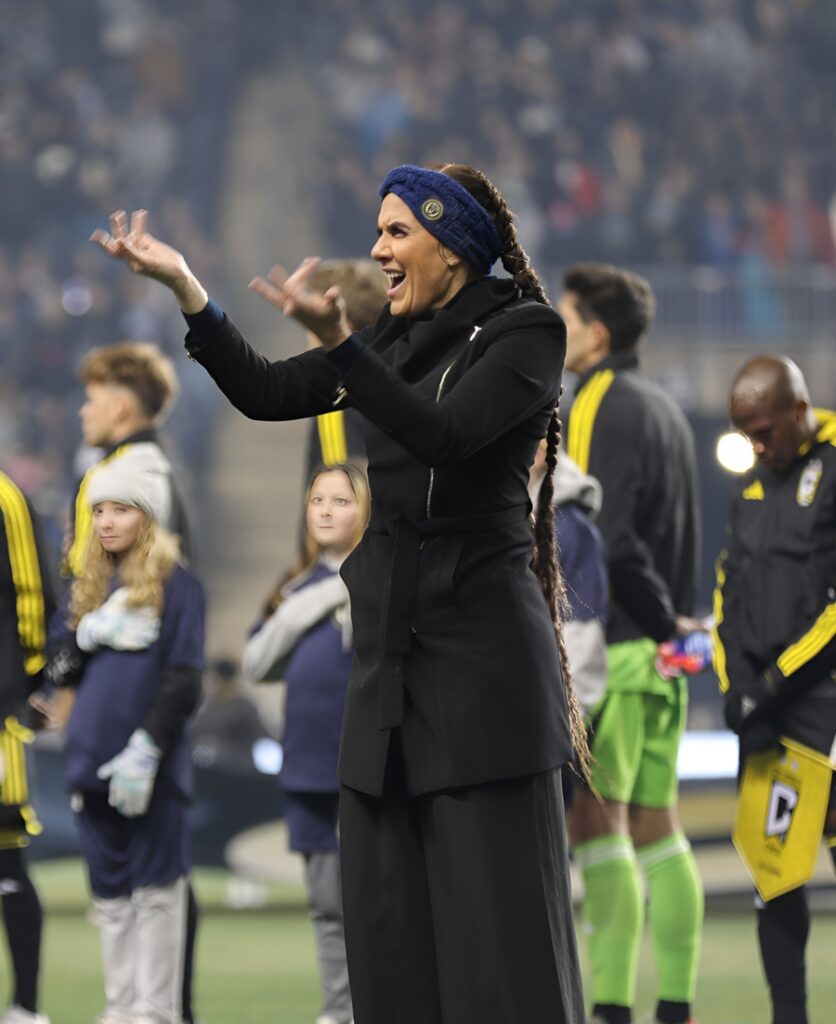
Image provided by Philadelphia Union.
Victoria Rodriguez-Mitchell, M.A., Columbia University, NIC is a highly experienced ASL interpreter for Language Services Associates (LSA), responsible for signing the National Anthem at Philadelphia Union games and providing essential communication for Deaf and Hard of Hearing fans.
For over 30 years, Victoria has been a collaborator in advocating for the Deaf and Hard of Hearing community. Her focus has always been on fostering innovation and inspiring meaningful change with the mission of ensuring Deaf individuals have equitable access to opportunities in all areas of life. She views language access as a fundamental human right, and one that enables Deaf individuals to fully engage in everything from professional sporting events to educational workshops, and everyday communication.
LSA and the Philadelphia Union are committed to enhancing accessibility for Deaf and Hard of Hearing fans. With initiatives like captioned player interviews and providing an ASL interpreter for the National Anthem, they are making significant strides toward creating an equitable environment for all. By prioritizing accessibility and fostering awareness, LSA, the Philadelphia Union, and Victoria are working towards setting a precedent for a more inclusive environment where everyone can thrive.
Victoria continues to be a catalyst, ensuring that the Deaf and Hard of Hearing community not only has a seat at the table but is actively shaping the conversation. She’s a reminder that creating an inclusive world requires intentional efforts to preserve, protect, and promote the civil, human, and linguistic rights of Deaf, DeafBlind, DeafDisabled, Hard of Hearing, and Late-Deafened individuals. Her work is a call to action for all to push forward, and to build a future where communication, connection, and community are accessible to everyone, regardless of hearing ability.
We sat down with Victoria to learn a little bit about how she became an interpreter, how she accomplishes her work, and to get her take on topics like Spanish Sign Language, sign language on Tik-Tok, virtual interpretation, and trilingual interpreting.
LSA: Tell me a little bit about how you got into interpreting. What inspired you to become an interpreter and what was the road like to get to where you are today?
Victoria Rodriguez-Mitchell (VRM): Oh, that’s my favorite question. When I was young, I met my friend Lisa Fazzolari, and her parents (Liz and Nick) are deaf, and they just kind of welcomed me. When Lisa would come here, she would hear Spanish, and when I would go there, I’d see sign language. So, that started my entire journey. Not knowing that this was a career or anything, I just really loved the Fazzolaris and I’m still friends with them today. I owe everything that I am to them for teaching me as young kind of awkward, quirky kind of kid. They just brought me under their wing and brought me into the community.
When I went to college I met Mark Drolsbaugh, who is currently a famous author, he wasn’t when I first met him, he was just Mark, and he brought me along in college. I feel like I stand on the shoulders of giants because it was just embrace after embrace. After Mark and I started working at the Pennsylvania School for the Deaf, again the community just embraced me and brought me along. It’s those small steps that brought me to where I am today, and I’m super grateful for each one of them. The Fazzolaris are my heart, they started this whole journey.
LSA: So you became friends with Lisa, and she showed you how to communicate with her parents and it took off from there?
VRM: Right, learning “hello” “how are you” you know, real simple things. Then she would introduce me to her friends and then the conversations would get more complex or more in depth, and I would learn more and more. But I’d also learn about deaf culture which I think is really interesting. Back in the day there was something called a TTY and it was huge. It was like this big green monster, it was a machine that would connect to the telephone, and it would send signals that would show the text. It’s smaller than a vending machine but that kind of stature, and it would shake the whole house. And they had the lights for when the doorbell would go off, so I learned a lot about deaf culture in the community and I really cherish that.
“Back in the day there was something called a TTY and it was huge. It was like this big green monster, it was a machine that would connect to the telephone, and it would send signals that would show the text. I learned a lot about deaf culture in the community and I really cherish that.”
LSA: That’s great. It seems so integral to understanding sign language and communicating with people. Many may not realize that in your home you need something that lights up when your doorbell goes off, but of course you would, how else would you know?
VRM: Right, so you don’t know until you experience it. You learn about deaf culture in these little steps until it becomes part of who you are.
LSA: You mentioned you speak Spanish, is Spanish your first language, and do you also interpret for Spanish?
VRM: My first language is Spanish, but I grew up here. My grandmother didn’t speak English, my mother speaks English with an accent, and we grew up during the time of the English only policy, so I would go to school, and I would be chastised for speaking Spanish. So Spanish was my first language, but I think heavily bilingual. My grandmother only spoke Spanish to me, but my mother spoke English and Spanish to me, and my father wanted to abide by the English only policy and only spoke English to me even though he’s also Puerto Rican – both of my parents are Puerto Rican. It’s a lot of integration and a lot of code switching in the head.
Did you know?
LSA: I understand that recently you were asked to interpret the Mexican National Anthem into American Sign Language and utilized trilingual skills to accomplish this. What was this experience like, and what’s the process like to accomplish something like this?
VRM: It was amazing. I practiced because they used words that we don’t use every day. They were talking about the bridle, and I was like, what is that word? It’s a traditional type of song so you have these older traditional words. Also, the Spanish that’s spoken in Mexico is not exact to Puerto Rico or the Dominican Republic, or Ecuador, or Peru, we all have our little colloquialisms and I wanted to be sure that I was on point with that.
For me it’s a mind melt. It takes me a lot to do it because I think I’m doing Spanish into English and then English into ASL, because I grew up doing English and ASL. When you asked me if I interpret in Spanish, I’m like oh no because your interpreters are at a whole other level when it comes to their vocabulary, and their depth of the linguistic part of Spanish. But I have the double benefit of knowing both Spanish and English so that trilingual is really great. There are some interpreters that only do trilingual, so I think Spanish into ASL is a little quicker for them than for me, because I’m processing how I want to express something when I hear it in Spanish, then I hear it in a visual medium, so there’s maybe an extra layer in there.
You want your best A+ effort, especially when you’re on the jumbotron and you want to rep LSA and the Union to your upmost. I do a lot of prep, because it means a lot to me – how I represent LSA when I’m at the Union, and how I represent LSA and the Union to the fans.

Image provided by Philadelphia Union.
LSA: I never really thought about the whole rehearsal aspect, I always thought oh you probably just do it off the cuff, but then again that would be impossible for something like that.
VRM: It would be like going and singing the National Anthem off the cuff – that’s one of the hardest anthems to sing. When we did Wrexham, it was sung in Welsh. So, one of my coworkers from Princeton, Alicia Van Cleve, we went and translated it, and then we met with the singer and said, when you sing this phrase, where are we in English? We had to match it up and when I went on the field, I had these in (points to earbuds). Alicia called me, I have my phone in my pocket, and as the singer is singing, Alicia’s telling me what she’s saying in English, and I’m signing it. We had already kind of translated it into ASL, so we did the double layer part. We did it in English, so when Alicia was speaking it to me, she was speaking it in ASL, so I was able to go straight forward.
LSA: Wow, it sounds like such a complicated process, but also a good way of making it easier by having that extra layer of help.
VRM: Yeah, there’s an extra layer taken off for you, but there’s also the prepping and the teamwork that people don’t see. Alicia’s on the sidelines and you don’t see her. A lot of times when a corporation hires an interpreter, LSA will say, hey you need two interpreters because this is a long time. There’s a lot of cognitive load, they’re going to go back and forth, they support each other. So, what you see as seamless, there’s a lot of background work going on there.
And the team at LSA is also similar where they’re gathering information and giving it to us earlier so we can prep and come into a situation as knowledgeable as possible.
Interested in becoming an ASL interpreter?
Check out our open positions at the link below.


